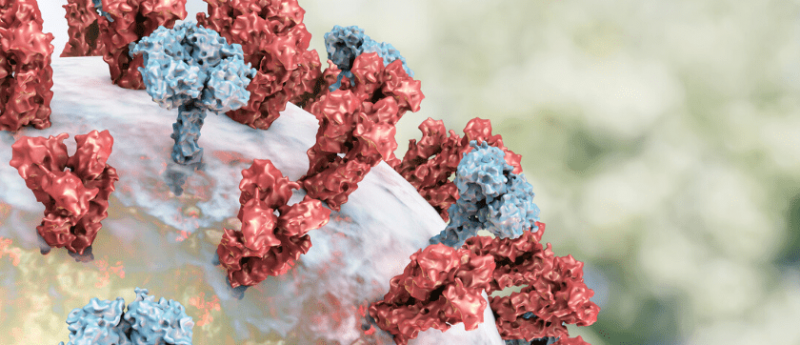Using computer models to outsmart spike proteins in SARS-CoV-2

As research focuses and grants are being redirected to find a treatment for COVID-19 in light of the pandemic, new strategies such as computer simulations are being employed to ascertain which avenues show the most promise and warrant further investigation. Researchers from the University of Illinois (Chicago, IL, USA) have used a computer model to determine whether their peptide inhibitor treatment could be effective against COVID-19.
The inhibitors they are testing are formed of α-helix bundles from the protease domain of angiotensin-converting enzyme 2 (ACE2), as detailed in their paper published in ACS Nano.
A characteristic of SARS-CoV-2 is the spike protein on its surface, which binds to ACE2 receptors on human host cell membranes, gaining entry and infecting the cell. Peptide inhibitors can, in theory, block the spike proteins from binding to the receptors by mimicking the protein binding domain of the human cells and attaching to the harmful spike protein instead. To design compounds that did exactly this in practice, Yanxiao Han and Petr Král (University of Illinois) used computer models, hoping to see which compounds would successfully mimic the ACE2 receptor.
Sign up to The Nanomed Zone for free
The researchers based their model on the known X-ray crystal structure of the receptor-binding domain of SARS-CoV-2 when it is bound to the ACE2 receptor. They were able to establish a set of 15 amino acids from ACE2 that directly interact with the spike proteins. From here, 4 different examples of a peptide inhibitor were drafted, each containing the sequence of 15 animo acids, as well as different combinations of other, stabilizing sequences.
Using the computer model, Han and Král studied how the new compounds were interacting with the viral protein and what energy activation levels were required for successful binding.
One of the candidates demonstrated a particularly snug fit with the spike protein of SARS-CoV-2 and will be proceeding into the next steps for testing in labs and then humans.
Although this treatment is not available for public use yet, the computational approach to assessing which treatment options are most likely to be successful could mean that promising treatments are identified and propelled into testing phases sooner.
For more free COVID-19 related content please visit our dedicated COVID-19 Hub on Infectious Diseases Hub here.
For more related news from The Nanomed Zone be sure to sign up here.